How do these marketing channels stack up?
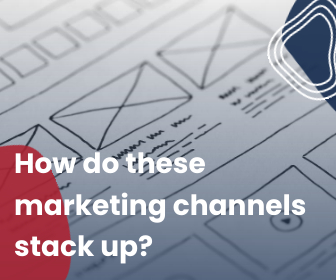
There are A LOT of different marketing channels out there. What are the pros and cons of some of the common ones?
Social Media
Pro
There are over 3.8 billion people on social media around the world. Social media is a fantastic way to connect with customers, build brand loyalty, and generate sales.
People don’t just want to buy from companies because they have good products and services. They want to know what your brand stands for in addition to what it sells. Social media can help potential customers get to you. Social media feel like a 1-on-1 conversation between the brand and consumer, which helps build loyalty.
Con
A lot of the value from social doesn’t show up immediately. It’s rarely simple to track social media’s ROI. Often the goal of social media is not just to generate sales but instead to build connections. Without measurable results, using social media can be discouraging.

Pro
Often it a brand’s only way to communicate with customers and can feel very one on one. A lot of millennial and gen z’ers expect to communicate with brands through email. Also, pretty much everyone has email so you know you will be able to communicate with people through email.
Con
We all get so. many. emails. Most office workers receive 127 every day. It can be hard to stand out from the crowd. People don’t have time to read emails that don’t actually provide them value.
Email marketing also has a lot of laws and rules connected to it that can hurt you if your aren’t careful!
Content/SEO

Pro
Customers often rely on a business’s website for information. Especially for local businesses, it can be the only way to know a shop hours or address. Putting the information on a website instead of a social media or directly in a browser legitimizes the information.
Good SEO gives your website credibility. It makes it easier for people to find your website when they search for it. And it helps create a smoother user experience.
Con
Bad SEO can hurt you. Most searchers never go past the first or second page of Google, though, which is why those top spots in the search results are so coveted. Having the proper SEO can prevent your website form getting organic traffic.
53% of all trackable website traffic comes from organic search. SEO is the main thing influencing how easy it is to find you online organically. Which is probably why it’s estimated that agencies and brands spent over $79.27 Billion on SEO services last year.
Google Ads

Pro
Where are people? On their phones. So, google ads is an extremely effective way to find people where they are. Google ads is great for brand awarness as well as retargeting. It is great if you want measurable results and analytics.
Con
Billboards, signs, posters, newspapers, and magazines all exist with in different physical spaces. With digital advertising however, we are all competing for the same ad space. That ad space is worth more now has less guarantees attached to it.
Trying to figure Google ads can feel like rocket science. There’s a large learning curve and it can a while to feel confident in the set up.
Print and Mail

Pro
Direct mail average open rate is somewhere between 68 and 90%, which is double, triple, or quadruple the average open rates of other marketing channels. Do people who open direct mail actually purchase? Yes! On average people who receive direct mail purchase 28% more items and spend 28% more money!
Why is direct mail so effective? It comes down to fact that we (humans) like getting mail. 41% of Americans of all ages look forward to getting their mail every day. We still want very real things in our hands, which is something totally lost in email inboxes or on social media. That tactile connection translates into 💰.
Con
Since Direct mail requires use of the postal system it has fixed costs. The graphic design of the mail piece may also have an additional cost. Using direct always requires a bit of math and if done wrong can hurt your ROI.
It’s not always posable to see direct, measurable results, from Direct mail campaigns. And if you can measure results, it may take a while to get the full picture.
Another thing that can be a disadvantage to direct mail is that you need a really good foundation of address data. The problem us that a lot of data providers don’t make sure that their data is accurate and that hurts the effectiveness of your campaign.
Connected TV

Pro
TV is a time-tested advertising channel. Although it’s a lot less common than it used to be, it can still be very effective. Many marketers are using CTV (connected TV) or OTT (over-the-top) channels to target consumers using streaming services and connected TV devices such as Hulu and Roku. Advertises are embracing these platforms as more and more ad space becomes available. Spending for CTV advertising is expected to grow from $6.94 billion in 2019 to $8.88 billion in 2020, a 28% increase.
Con
With customer attention spread so thin and cable tv subscriptions consistently falling, (over 16 million in the last five years) there’s a lot less advertising space available. Content consumption is at an all-time high and therefore, competition for viewer’s attention is as well. 84% of marketers say that it is getting harder to grab a consumer’s attention with television advertising alone.
Audiences today expect personalized and relevant targeted ads. Linear TV (cable and network television) often fall far behind in targeting capabilities. Therefore, it can be a challenge for advertisers to figure out how to integrate linear TV into their campaigns.
Data, Analytics, and Insight: What’s The Difference?

Data, analytics, and insight is kinda our thing. However, it seems like a lot of people use those words almost interchangeably. Are they the same thing? What do they mean for your business?
Data = The Information
Analytics = The Connections
Insights = The Actions
Data is pure information. For example, data about your current customers (first party data) is information such as average age, gender, location, or occupation. Analytics are the patterns that connect those things.
That would mean that data is knowing that you sent over 20,000 emails in June 2021. Analytics are knowing that your average open rate is 22.8% and your click through rate is 0.09%. The analytics show you a clearer image of the data.

I heard a really great illustration about this recently. Thinking about data and analytics can be compared to looking at an impression painting (like this one: The Cliff of Aval Etretat by Claude Monet.) Up close, all you see are the brush strokes and colors. That’s like looking at raw data. You can see what it is made off. But if you back up a few feet and look at the painting, you can see what the image actually is. Similarly, looking at analytics gives a more complete view of your data.
What’s the advantage of Insight?

Insight is the action connected to the analytics. Taking the example of 20,000 emails, insight would taking the knowledge that you have a great open rate but a terrible CTR and doing something about it. Applying insight means changing your call to actions or link to generate a better click through rate.
What’s another way to apply insights?
Building a Buyer Persona
What is a buyer persona? In the simplest terms, a buyer persona is exemplification of all of your customers. The most common way to do this is to create a fictional person that has the most common demographics and interests of your customers. Basically, you take data, analyize it, and then use insight to act.
Ask yourself: What are your customers common denominators? (Data) What do they want? (Analytics) What are their pain points? (Analytics) Once you have this information, it can be combined into a person you can picture makes it easier to connect with the crowd. (Insights)
Jim Edwards from Funnel Scripts explains buyer personas as the main character in the story of your company’s customer journey. Although your company already has its own personality, (or brand) in order to success the narrative you’re telling haws to focus on what the customer wants and needs. You are there to help them get to where they want to go. Jim Edwards example buyer persona was for a weight loss company. Their buyer persona is a middle-aged unicorn named Fred who needs to lose weight if he wants to be successful at his quests. Fred is the main character in the story. The weight-loss company is there to help him.
What data do you need to create a buyer persona?
Like any good main character, your buyer persona needs to be well rounded. It needs to have a purpose, interests, goals, and struggles. It’s especially important to know what motivates them so you can help them.
Here’s some common buyer persona attributes.
- What are their basic demographics?
What gender to they identify as? How old are they? Where do they live? What is their relationship status? Are they educated? - What do they do for work?
What’s their job title and description? But more than that, are they a decision maker? What do they influence at work? - What are their interests?
Do they have hobbies or interests? What do they do in their free time? Are they part of a community? - What do they want and why can’t they have?
This a big thing for figuring out what you can do to help them! What are their goals and dreams? What are their pain points? Like, what keeps them up at night? - Why wouldn’t they buy from you?
What’s stopping them from buying from you? What objections may they have? - What ways would they prefer to interact with you?
Do they use social media? Do like a particular social media? Is a phone call the best way to reach them?
Using data, analytics, and insight is essential to having a successful business. What ways to you implement data in your business?
4 Internet Marketing Terms You Are Probably Using Wrong
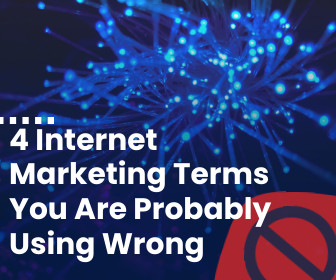
The internet and the marketing industry have something in common: They are full of terms and acronyms that can feel like an entirely different language. It can be super easy to misunderstand and/or misuse those terms. Here’s 4 “marketing/internet jargon” terms you are probably using wrong!
- Viral ≠ more views than you normally get
- Meme ≠ a picture with words on it. Please stop doing this
- Clickbait ≠ a catchy title
- Landing page ≠ a web page you’ve landed on
What do these words actually mean and how can you use them to communicate more effectively what you actually mean?
#1 Viral
What does it mean when you go viral? What makes something viral can be hard to quantify. There’s no magic number that means something is quote-on-quote viral. (Although MANY people try to make one.) Instead of defining viral by the numbers, it’s easier to quantify it by 2 things: reach and speed. The Wikipedia article on viral internet content makes the analogy that viral content is very similar to a virus. Viral internet content self-replicates and quickly spreads far from its original source. And often when content goes viral, it takes on its own life separate from what it was originally intended to be.
Let’s say one of your posts gets double or trip the amount of reach it normally gets. Is that viral? That’s very exciting, but no. Sorry! Although it’s possible to have something go viral with a specific community, viral implies exposure far outside it’s intended audience’s reach. With the number of platforms, and the cross-contaminating reach of those platforms, the general rule of thumb is over 2 million views in less than a few days to call something “viral.” This doesn’t mean that the content has to be a week old, it has to do with rate of expansion.
#2 Meme

This is one of my biggest pet peeves. It can be easy to look at a meme and think that any picture with words on it can be called a meme. It can be, but that doesn’t mean that it is. Meme was coined in 1976 by Richard Dawkins in his book on Darwinian evolution as an attempt to explain memetics; or, how ideas replicate, mutate, and evolve. What makes something a meme is not what it is, but instead the way that it replicates.
For example, the Star Wars “For the better, right?” meme has been a common format to use this month. What has made it a meme isn’t the original movie quote, or the format itself. It is a meme because many people are using or repurposing the format to convey information. Memes are only effective if the format conveys emotion or a message without it being explicitly stated and in a variety of different situations.

Although the types of memes we think of are usually in a concise image-based format, things like folk tales, urban legends, and chain letters are all versions’ memes. They are structured format in which information is shared and evolves.
#3 Clickbait
Are all catchy titles or hooks clickbait? No. The technical definition of clickbait is any text that is designed to entice a user to click or read on. However, the expression has a more specific connotation than that. It implies that the title isn’t accurate and is somehow disconnected from what you will see if you click. It’s similar to old school bait-and-switch marketing. Using bait or a hook isn’t wrong if you are looking to attract people, HOWEVER, the switch is wrong.
Clickbait is sensationalized content. An article titled “5 money making secrets you need to hear,” isn’t click bait if the article is actually about 5 money making tips. Which is part of what makes cracking down on malicious clickbait tricky. A lot of platforms like Facebook and YouTube measures in place to mark clickbait as spam. But how can AI decide if those 5 money making secrets are tips and tricks you actually need to hear? How does the platform know if those “secrets” can actually make you money? Clickbait is connected to consumer perception.
#4 Landing Page
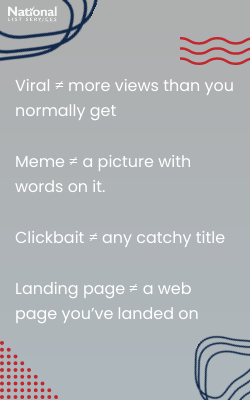
If you land on a webpage does that make it a landing page? No, because a landing page is a webpage you land on that is designed with a specific purpose in mind. One person illustrated it this way: You could use a baseball glove to retrieve a hot dish from the oven, but that doesn’t make your baseball glove an oven mitt. So just because someone lands somewhere doesn’t mean that it is a post-click landing page. The landing page could be designed get the user to make a purchase or fill out a form or watch a video. It doesn’t matter what the purpose is, it matters that it has one.
What is the advantage of separating your landing pages out to specify a single action? Research has shown that companies using 40 or more single action post-click landing pages generate 120% more leads than those using less than 5!
Do you have any marketing/internet terms misuse pet peeves?
5 Ways to Help Emails Reach People
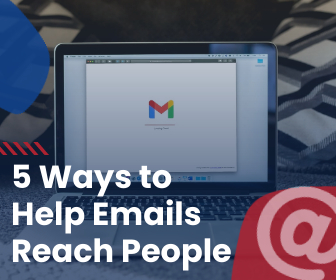
There are so many things that impact an email’s effectiveness. Often, what matters to the consumer and what matters to the email service are very different things. It’s important to strike the right balance in making the consumer and email service happy, as well as reaching your goal in sending the email. So, how can you make sure your emails reach people?
The Email Services
What do email services care about? They care about the backend/behind the scenes stuff. Things like how heavy images are and the amount of content and the types of links. This is where general best email practices come into play.
It’s important to give consumers an opportunity to opt in (and out if they want) of your email campaigns. If you don’t give people a way to opt out, you are breaking federal email laws and get blacklisted or penalized. Give people the option of choosing what types and how much email content they want from you. Follow through on their requests promptly. Legally, you are required to honor their request within 10 business days. Honoring that request promptly will build on their opinion of your brand.
What other email practices are required by law? Don’t use misleading or inaccurate header information such as your “To,” “From,” and “Reply-To” information. You want people to know where the email is coming from and so does the email service provider. Consumers don’t want to get an email from someone they don’t trust, and the email service provider doesn’t want to deliver email like that.
Don’t mislabel the email. The CAN-SPAM act requires that email subject lines accurate reflect the content of the email. That includes ad information. Like most social medias, email is required to tell the consumer if it an #ad. However, there is a lot of leeway on this and how you choose to disclose this information is up to you.
Consumer’s Opinions
Now that you have followed all the email laws and best practices to get your email in your consumer’s mailbox, what else should you do? Well, consumers care about catchy subject lines, engaging and interactive content. Here’s 4 things that will impact your emails effectiveness from the consumer’s point of view:
Choice of Words
Email marketing provides freedom for trying out different types of copy until you find works best for your audience. Every audience is different so what content will be the most effective is also different. It is important to understand your demographics and who your audience is.
Personalized Content
Email is more than just delivered information. It’s a conversation between brand and consumer. Often it a brand’s only way to communicate with customers and can feel very one on one. The consumer feels like they know the brand like a person, so it makes sense if the brand communicates with the consumer as if the know them as well. They are simple things that make that conversation more memorable, for example, many brands use the customer’s name in emails.
Beyond that you can use audience segmentation to separate your audience into groups that share common characteristics like demographics and behavioral information. Using your audience segments to target your message to things that each group are actually invested in can greatly increase how personal your marketing will feel to the customer.
Brand Consistency
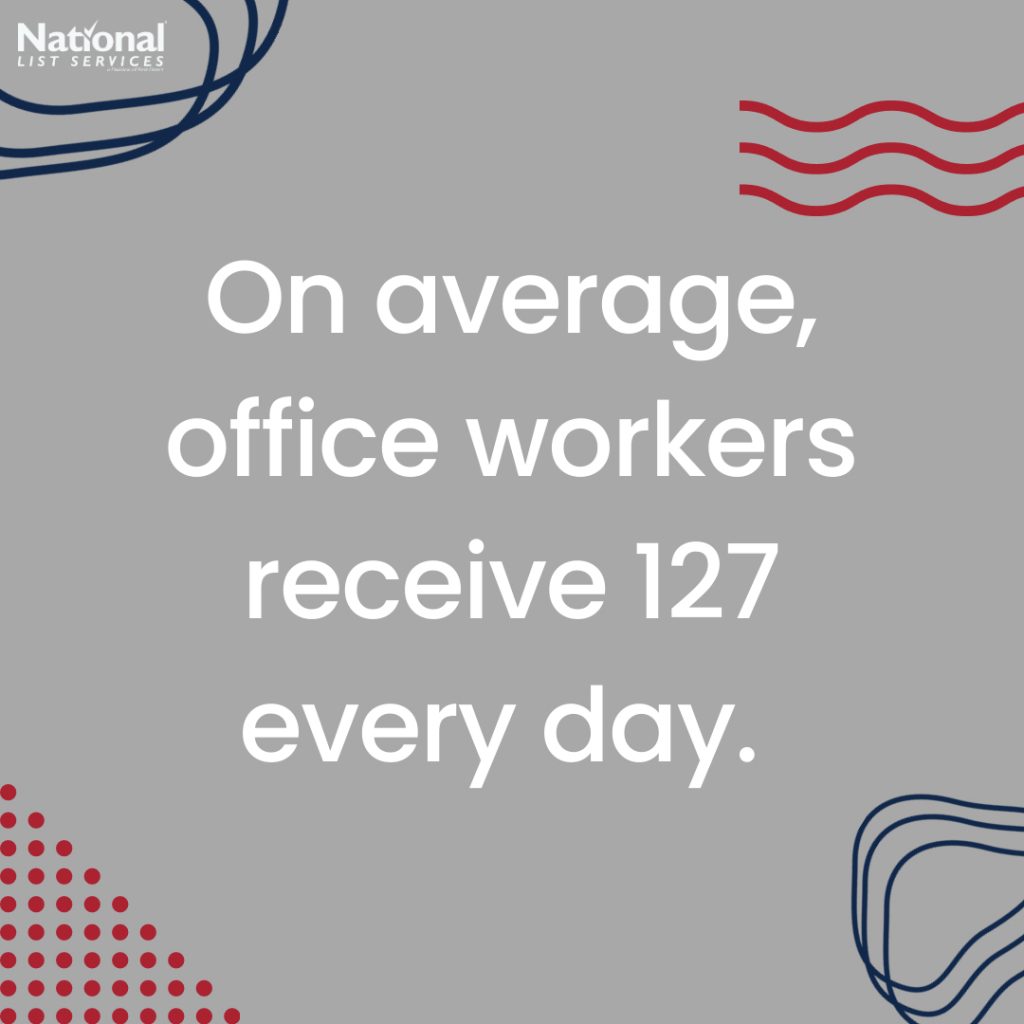
Since email is often one of main touch points brands have with consumers, it’s really important to maintain brand consistency. The consumer needs to know that the message is from you. Keeping that brand consistency helps your brand’s personality shine and helps people get to know you. Brand consistency builds loyalty and trust. It helps the consumer maintain the connection to your brand.
What brand elements should you include in your emails? Your logo, brand colors, and fonts are good places to start. Due to the nature of email, you don’t want to over crowd it with branding. Instead, think about how tone and feeling. Does the way this email is set up feel like how my brand feels?
Don’t waste people’s time
Most office workers receive 127 every day. People don’t have time to read lengthy emails that actually provide them value. Email copy writing is about providing value as succinctly and quickly as possible. Be direct and to the point. Don’t word vomit on people. Use infographics, bullet points, and short paragraph too highlight the point of your message.
What makes you open an email?
Need a Refocus Break?
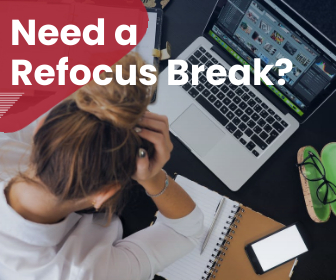
In this digital world, a lot of us probably spend more time at our desks than we’d like to. Long amounts of time staring at a computer can take a toll! Here’s a few things you can do to give you a physical and mental break.
Take a Stretch Break
Admit it, you’re sitting hunched over your keyboard or phone right now. 😜 Its ok; we all do it. Here’s 3 quick stretches you can do at your desk!

#1 Give Your Wrists Some Love
Being on the computer all day overuses some muscles and underuses others. New York City based physical therapist, Dr. Abby Bales, suggests stretching your wrist flexors and extenders. The easiest way to do this is to hold your arm straight out and bend your wrist up and down at 90 degree angles. Bales says this “prevents the wrist from getting locked in a smaller range.”

#2 De-Hunch
Your upper back and shoulders can lock from being at a desk too long. Dr. Bales suggests stretching by clasping your hands behind your head and squeezing your shoulder blades. This opens up your chest and shoulders, helping stop the hunch.
#3 Big Shrugs

While on the computer most of us have the habit of scrunching up our shoulders and leaning toward the screen. Doing some 3-5 second shoulders shrugs helps! “By actively shrugging and then letting go, the brain is made aware of the unhealthy height of the shoulders,” Dr. Bales said, and it resets accordingly.
Mental Resets
Anytime you disrupt your routine (either by doing little things like pausing to stretch or like, I don’t know, a global pandemic) you have opportunity to reset. What can you do to reset your brain?
#1 Breathe
Pausing and taking a couple deep breathes can help clear your mind, relax, and refocus. It’s as simple as just looking up from your computer or phone and focusing on your breathing for a bit.
#2 Reprioritize
Another thing you can do to mental reset is take a moment to go over your tasks and reprioritize. Ask yourself, “What is my overall goal for the day and what do I need to do next to reach that goal?” It’s critical to understand what tasks are most important. Inevitably things change throughout the day; deadlines move and priorities shift. Reorganizing your task list can help you to stay focused on what really matters and make it easier to adapt to shifting priorities.
#3 Change Up Your Surroundings
Changing something about your surroundings can help you refocus. Can you get up and move? Now that it’s summer, could you work outside? Disrupting your groove gives you the opportunity to reset your focus. Changing where you physically are or even something small like switching up your music is super effective!
What ways have you found to reset your focus and give yourself a physical or mental break?
The Data You Need to Market To Those Under 25
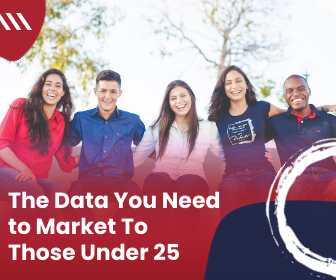
Do you ever read a statistic that just messes with your head? For example, I recently read that by 2022, 41% of the world’s population will be under 25. Which is crazy!! And creates an interesting marketing challenge. How can you effectively market to a generation who has grown up online and is constantly inundated with content and advertising?
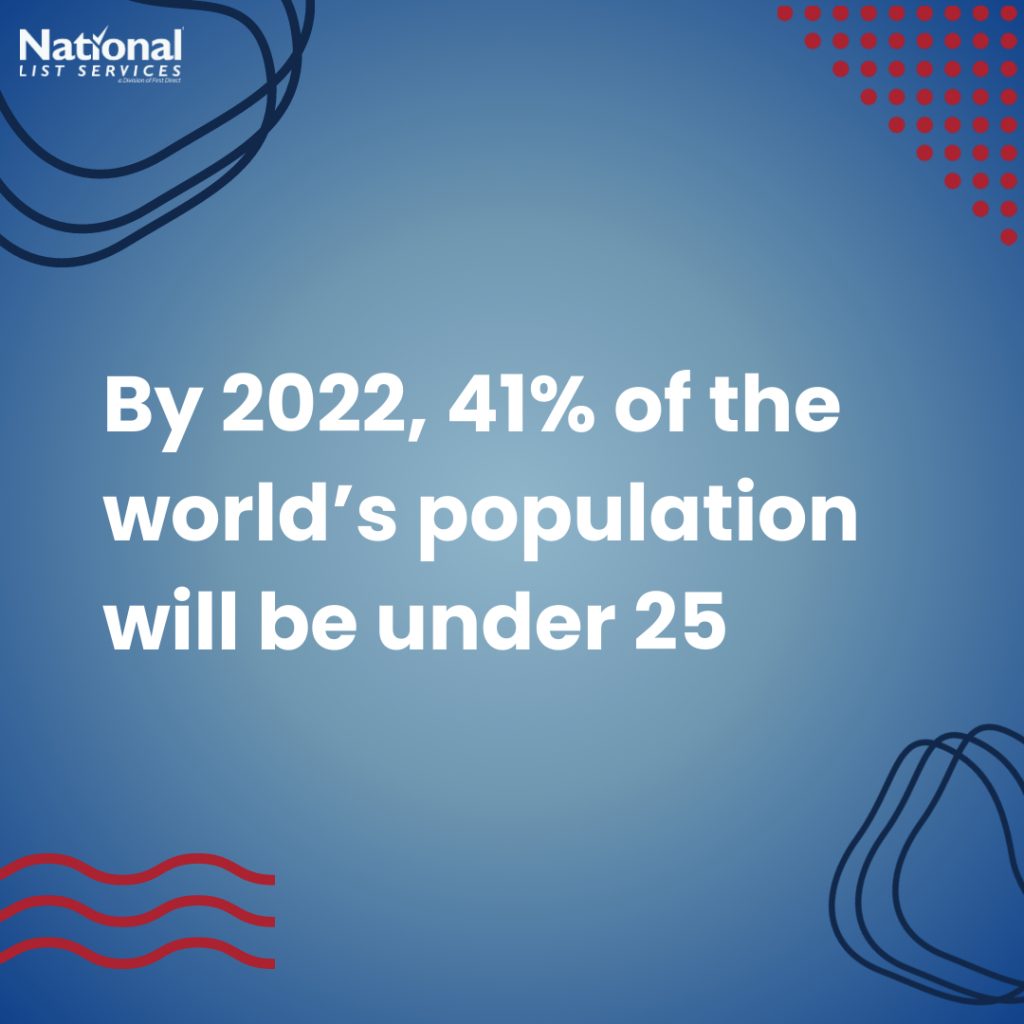
People under 25 not only take up a large share of the world’s population but they also make up a disproportionate amount of online and social media users. However, those of us in this age group statistically have shorter attention spans and tend to make decisive decisions about whether or not to consumer content or ads. A study in 2019 found that 64% of 18-24 tune out content from cluttered environments. Leading to 46% of advertisers saying that they have issues getting their content to stand out! Also, a third of advertisers say that it’s a challenge to find effective ad placement sin all the online clutter. What can you do to cut through all the online noise and reach this massive market?
#1 – Find Shared Passions
The sheer amount of product, companies, and information available is staggering. It is not enough anymore to have a good product available anymore, your brand ideals and personality need to match with the personality of your consumers. 56% of Gen Z consumers say that having shared passions and perspectives is a major factor when it comes to their engagement with a brand. However, Gen Z’ers are fantastic at sniffing out inauthenticity. Your brand personality and ideals need to actually be what you say they are. Actions speak louder than words!
What are the advantages of having a well-defined brand personality and ideals? Giving your company a personality makes things like content creation a lot easier. Knowing who you are also can help you make decisions about the direction you want to go in the future.
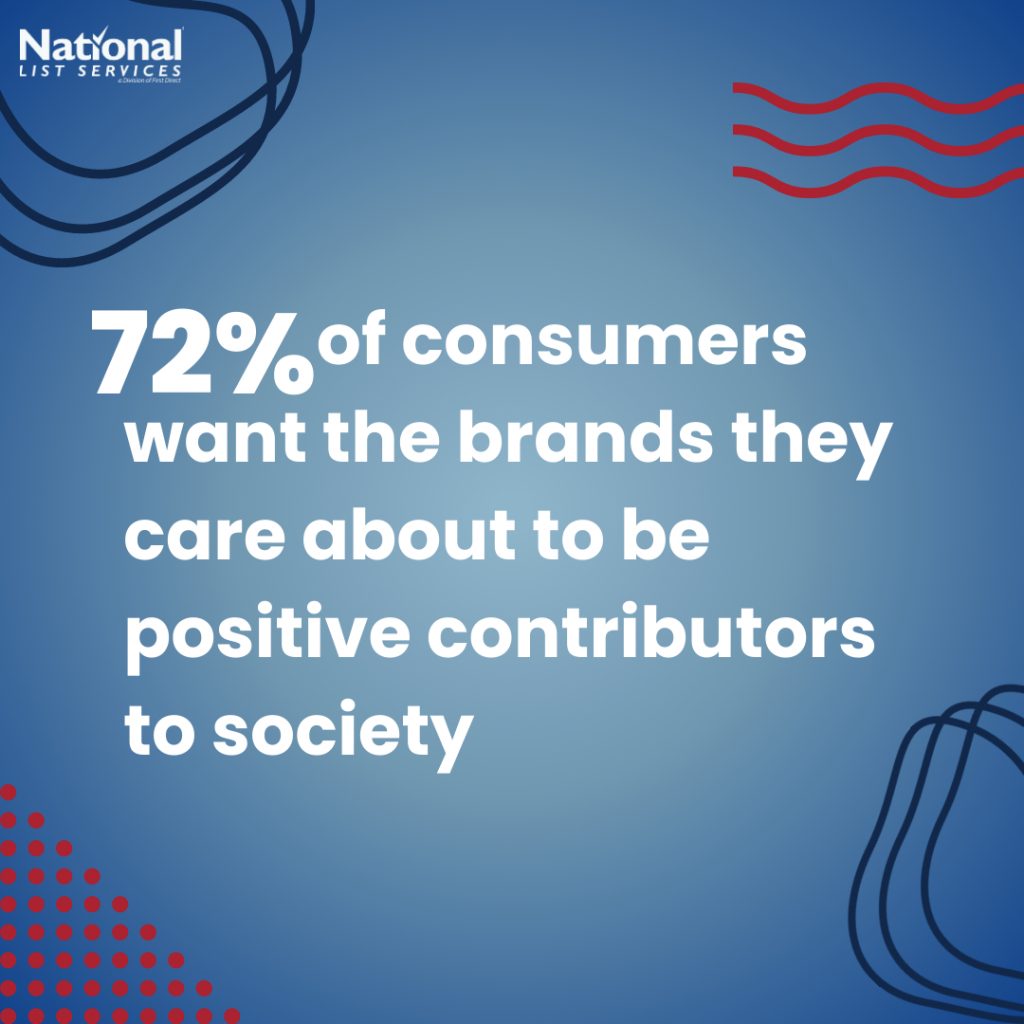
And 49% of young consumers say they will evangelize a brand they feel represents their values, likes, and personality.
Don’t be afraid of incorporating causes you care about into your brands personality! 72% of consumers want the brands they care about to be positive contributors to society. We’ve seen in recent years that many brands (especially smaller companies) connect their core brand to a charity or cause they care about. Younger consumers are 69% more likely to buy from a brand that contributes to a cause.
#2 – Choose Quality Locations
Younger generations are big on authenticity, brand trust, and quality. 74% of 18–24-year-olds believe that brands are responsible for where their ads are shown. Which is true! There’s very little excuse for having your ad show up on a website that doesn’t believe in the same things as you. Programmatic advertising and digital display ads give you a lot of control over your ad placement. Nearly 40% of advertisers have faced some backlash for having ads appear near low quality content. 54% of younger consumers say that ads placed near premium content inspires more trust in the ad itself!
#3 – Use Innovative Technology
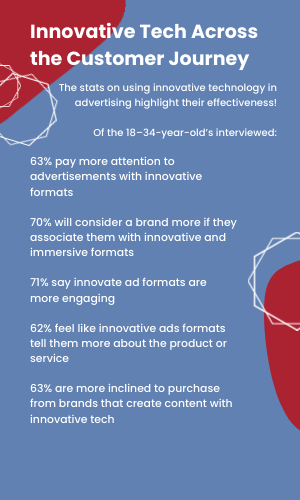
From AI and AR driven content to native and contextual ads, technologically advanced are advertisements are becoming more accessible. The stats on their effectiveness across the entire marketing journey speak for themselves!
Of the 18–34-year-old’s interviewed:
63% pay more attention to advertisements with innovative formats
70% will consider a brand more if they associate them with innovative and immersive formats
71% say innovate ad formats are more engaging
62% feel like innovative ads formats tell them more about the product or service
63% are more inclined to purchase from brands that create content with innovative tech
#4 – Personalization
Personalized ads are effective for every age group. Gen Z’ers and Millennials are less tolerant of ads that aren’t personalized. Most younger consumers have in innate understanding of how their personal data is used to create targeted ads. Being targeted (or retargeted) based on their interests and past activities are expected. Thankfully creating effective personalized ads are easier than ever to make.
- What can you do to create effective personalized ads? Start with the information you have about your customers. It’s difficult to know what your customers want if you don’t know who they are. Look at your 1st party data. What are your most common demographics? What are their interests? How would they most like to be communicated with?
- Use the tools available. Marketing automation platforms and CRMs can do a lot of the heavy lifting when it comes to segmenting data. Many of them are designed to help create simple, personalized messages.
- Have a well thought out plan. Do you have a mapped-out customer journey? Knowing where in their journey your customers are makes a big difference in the types of personalization that will work for them. Think about nurturing. Pay attention to the details. Make sure that there aren’t little annoying things such as, getting an abandoned cart email even though you’ve already come back to purchase it. Get rid of triggers that are connected to repurchasing products commonly only purchased once.
- Know when to walk away. Keep your data clean. If someone has never opened an email it might be a good idea to take them off your list. Their data could skew your demographics and could make understanding what personalization your active customers need difficult.
Is it effective?
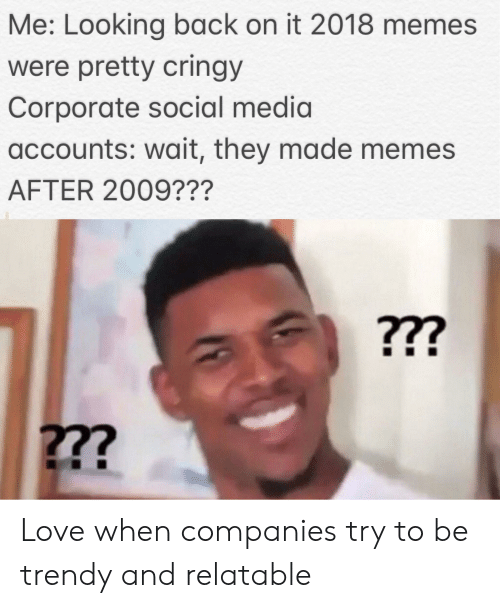
Is it effective? Yes! From that survey of consumer between the ages of 18-34, 58% said that a personalized ad helped them make a purchase decision. 42% also said that they had clicked on a sponsored ad in the last 6 months!
In my experience, a lot of companies panic when thinking about marketing to young consumers. They feel like they need to be relatable or “cool.” That often comes off as disingenuous and is easy to see right through. It’s far more effective to instead focus on building a relationship with them. Make it easier for them to see who you are and what you stand for. Chances are they care about the same things you do!
All The Things You Need To Boost SEO

SEO has proven over and over again that it is essential to growing (and maintaining) your business. However, it doesn’t often get the spotlight it deserves! So, here’s some things you need to know to boost SEO.
What is SEO?
SEO stands for search engine optimization. Search engines look at look at many site elements like structure and design, visitor behavior, content, and other external factors to decide how highly ranked your site should be in the results pages. SEO has become the catch all term for all things you can do to make your site look more appealing to search engines.
What are the advantages of good SEO?
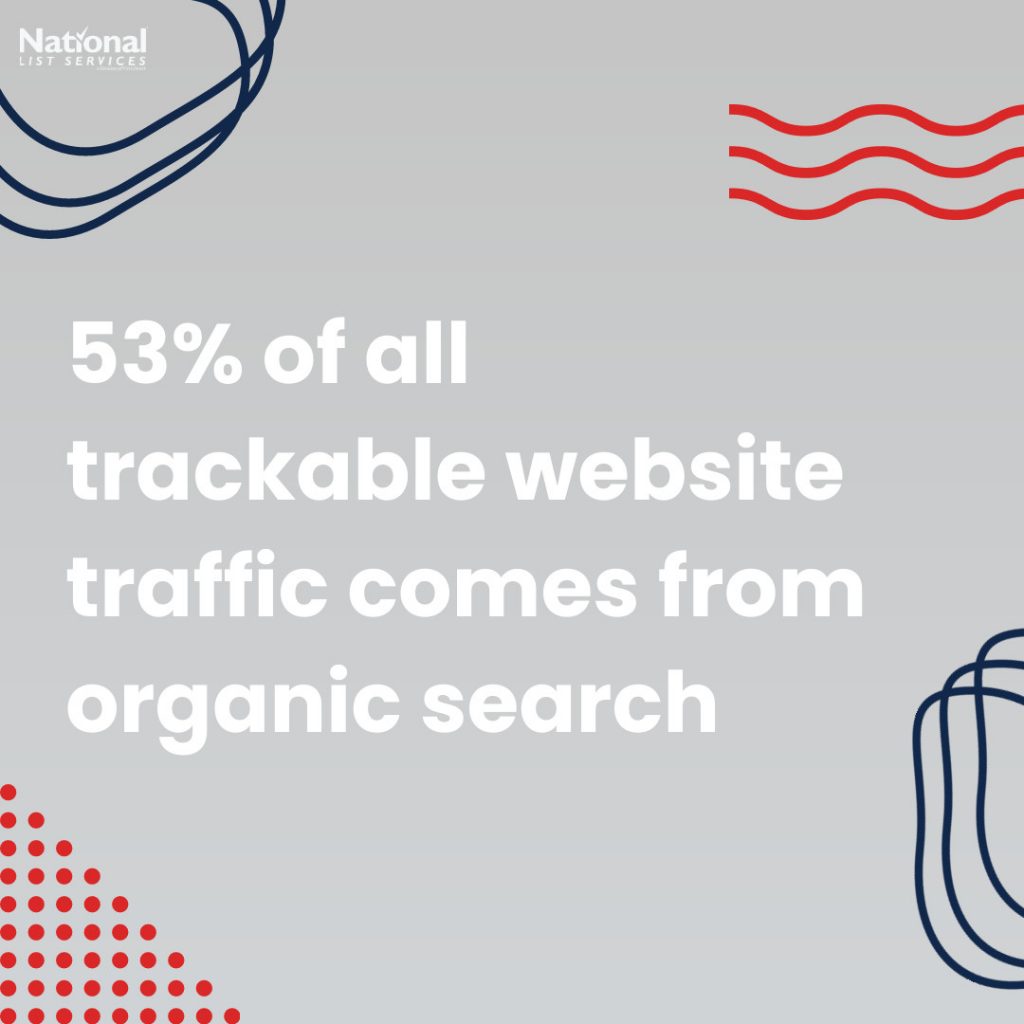
Good SEO gives your website credibility. It makes it easier for people to find your website when they search for it. And it helps create a smoother user experience.
The other important reason for making sure your websites SEO is up to snuff is that it helps generate organic traffic. 53% of all trackable website traffic comes from organic search. SEO is the main thing influencing how easy it is to find you online organically. Which is probably why it’s estimated that agencies and brands spent over $79.27 Billion on SEO services last year.
SEO is also important in driving local searches. When you search for “Best Pizza Place” near me, the results you are shown are based on the pizza place’s SEO keywords.
Where do you need to pay attention to SEO?
Everything “online” can be indexed and therefore optimized. Google indexes websites and apps that they own. So, your YouTube video search optimization is connected and combined with your website optimization. However, some companies, like Facebook, categorize videos and posts internally, meaning that it doesn’t help general search engine SEO.
What can you do to boost SEO?
Personally, I would split SEO into 2 main categories: Content and Categorization. Both are super important but require different things.
Content
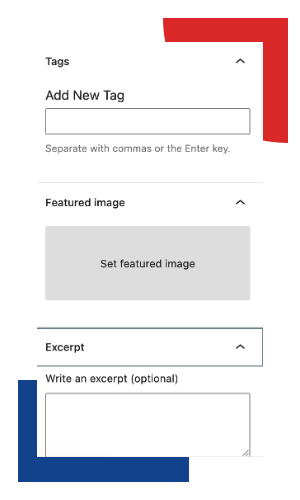
Content is all the things you put out there. Search engines look at what you are putting out there to determine your search rankings. Google likes blog articles and web pages with a lot of content. Adding pictures, videos, links, and charts shows search engines that what you are creating should be seen. They are going to rank something high in the search results if they don’t think its valuable.
To go along with that, search engines look at user experience. Is your website/blog easy to read? Do you have paragraphs, subheadings, punctuation, and spacing? Is it super short? (Long form content, over 2,000 words, tends to rank higher.) Do your pictures and video take a long time to load? How about accessibly? Do you have alt text for your images and text readers?
Search engines want to provide the best possible experience for its user and will rank your website accordingly.
Categorization
Categorization is all the “backend” stuff. Keywords, hashtags, blog categories, utm links, exerpts, and featured images all fall into this bucket. The best way to boost this type of SEO is literally just fill in every box provided. If the video you are uploading to YouTube as a field for title, description, keywords, hashtags, ect: give them that information! Search engines need to know what they are ranking, and all the backend information is how they know what it is and where it should go.
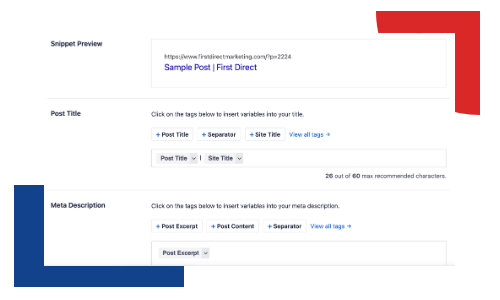
If you write an article called “How to make good pizza” the search engine will put with other information on pizza. However, if your article also has keywords like, “good pizza,” “how to,” “cooking,” “dinner for two,” “Italian food,” and so on, the search engine has a lot more places it can show the article.
Another thing you can do to boost SEO is to repurpose content. Search engines like to see a lot of content that revolves around a single topic. It shows a consistent brand message and purpose. A consistent brand message can indicate brand value.
What ways have you found to be effective in boosting SEO? Do you have a favorite method?
The Best Social Media Platform For You
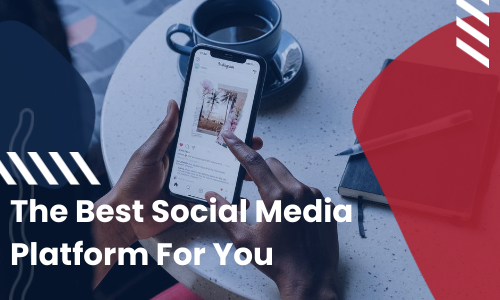
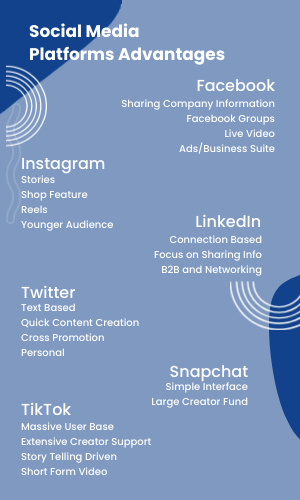
There are so. many. social media platforms available. Each have their own flavor and specialty. It can be overwhelming to figure what platforms are the best fit for you and your company.
Ideally, the answer to what platform should you use is: all of them! There are many tools and social schedulers available to make it easier to post to many accounts and platforms at once. However, even if you are able to consistently post to a wide variety of platforms, it is helpful to understand what each platform excels at. And, what each platform needs.
Let’s break it down:
Facebook has roughly 2.8 billion monthly users, and because of that, Facebook is in a lot of ways a necessary evil. Since Facebook owns some of the other platforms, having a Facebook business account is a necessity. From a content standpoint, Facebook really excels at four things.

- Sharing company information. Facebook (and Google my Business) are often the first place updated about hour changes, services, locations, etc.
- Facebook groups. Facebooks groups are an excellent way to build micro communities online. For example, we are a part of Facebook groups for specific SaaS products we use, different communities like the 10X community, as well as groups to network with like minded businesses. Because these groups are often moderated, they can provide a safe place.
- Live video. Facebooks live video and event scheduling feature is one of the most robust available. Because of Facebooks integrations with Instagram, it’s easy to stream to two places at once. Facebook catalogs video internally, meaning that Facebook video doesn’t help general search engine SEO, which is something to keep in mind.
- Ads. Facebook has its own ad platform that only works with their family of applications.
Instagram constantly adds features, so even though it started out as a purely visual platform, its effective for all businesses. Here’s some things to keep in mind about Instagram:
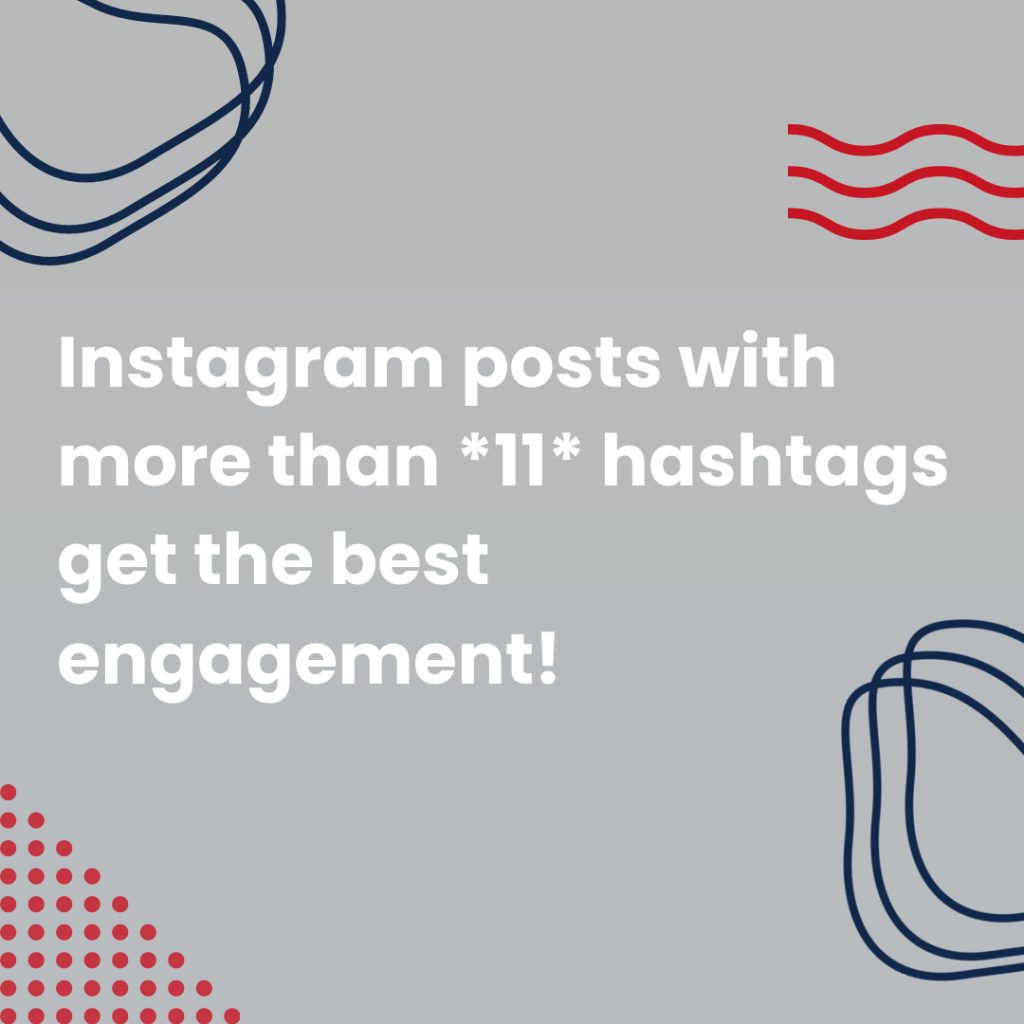
- Instagram stories have high engagement rates. They are great for creating authentic interactions with your followers. And they can be shared directly over to Facebook stories.
- Instagram shop feature is very comprehensive and easy to use. If you are a business that sells physical products, having an Instagram shop set up is very beneficial.
- Instagram Reels take parts of TikTok and YouTube and combine them together. Unlike, TikTok they don’t have a 1-minute time limit so you can say a lot more. Live video scan be converted directly to Reels.
- Instagram’s user base is generally younger than Facebook. More than 50% of Instagram users are between 18-35, while more than 60% of Facebook’s user are over 35.
LinkedIn has started to shift away from a purely networking platform to an information sharing platform as well. They recently added a live video feature and seem to be working to towards taking some of Facebook’s power away as the B2B social.
LinkedIn posts that are not self-promotion work well. It’s a great place to pull over blog information and transcriptions/scripts from live videos.
LinkedIn is all about connections, and interactions that are mutually beneficial. If you can find the right audience or community, chances are you will get a lot of engagement and connections.
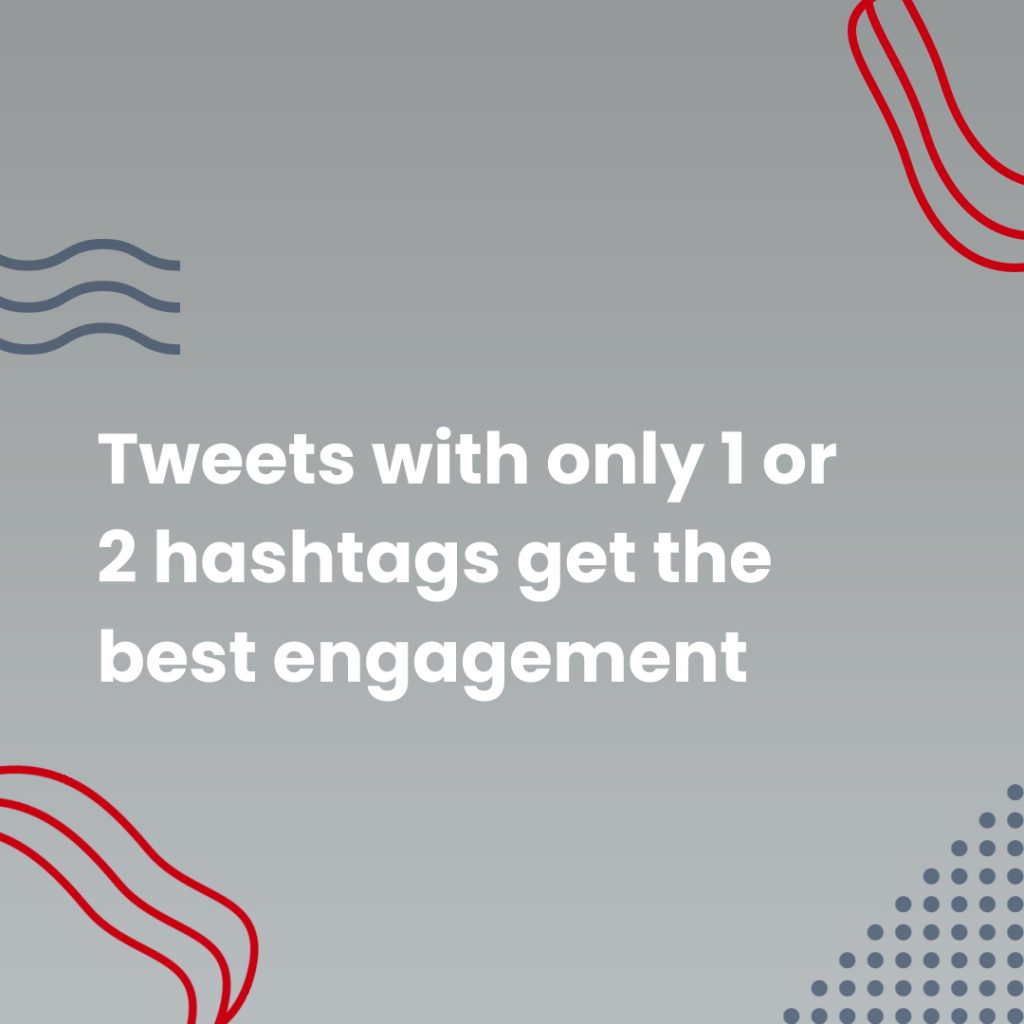
Twitter is easy to use and easy to generate content for. The snappy text-based format pushes engagement. Twitter is great for cross promotion across platforms. Screenshots of Tweets work well on other platforms. And Twitter is great for sharing links to your own content as well as highlighting other things you care about.
Twitter is also great for building personal relationships with followers. The stream of consciousness format can feel like a personal one-on-one conversation.
Snapchat
You may be surprised that Snapchat is included on this list. Snapchat’s audience skews very young which often eliminates it from company’s marketing plans. The platforms interface also makes it difficult to brand yourself and to find new followers. (Unlike most other platforms, Snapchat’s “explore” page doesn’t usually promote accounts to follow.)
However, Snapchat recently launched a creator fund. They have made extremely easy to get money as a creator on the platform. They seem to have learned from past mistakes and are pushing creators to use the app. (Many people reported making 6 figures in their first month!)
TikTok
TikTok is not just for the kids. It has a massive user pool, extensive creator funding, and a simple structure. It’s relatively simple to leverage their algorithms to your advantage. And since it’s a few years old at this point, there are established content formats and trends you can use.
It’s short form (60 seconds max) video format is great for storytelling and building personal relationships.
Many companies use it as an almost “behind the scenes” look at their day-to-day work. That type of content is great for engagement and creating brand loyalty.
TikTok is highlighting your personality or company culture.
What social media platforms do you view as essential?
Want help with getting your social media marketing rolling? Let us know!
Should You Repurpose Content?
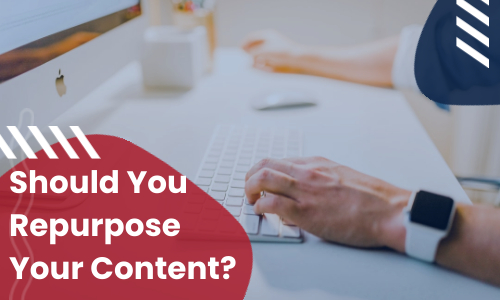
So, should you repurpose content? Yes! Recycling or repurposing content has a lot more advantages than just saving time. (Although that is very helpful. As the old adage says… Time is Money! 💰 )
What does it mean to repurpose or recycle content? There are a couple ways to do it. One way is to repost or reshare the content as is. A lot of companies do this with TBTs or just highlighting past content. Another way to repurpose content is to take old content and use it as an outline for new content.
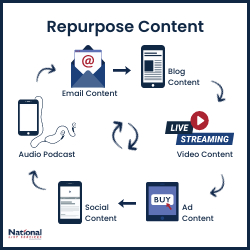
For example, once a Live Video stream is over, the audio can be published as a podcast on platforms like Spotify or Apple Music. Video clips of highlights can be repurposed into social content or ads. As well as pull quotes. The transcript can be turned into a blog article.
(This article is based off an outline for a live video, that was in turn, based off another blog article, that was itself based off one of Live Roundtables. Content can generate other content.)
What’s Your Message?
If you have been making content for a while, you probably have a good idea of what your message is. So, no matter what you do, some part of everything you create will be a reiteration of something you’ve said better before. That’s a good thing! Constantly adding drastically different messaging can create a confusing overall brand message. Your brand pillars and values aren’t going to change so your general message probably won’t either.
For example, the foundation for everything we do is using accurate data to create effective marketing. All the content we create is in some way or another connected to that. Therefore, it makes sense that we reiterate ideas and messages. That doesn’t mean that we don’t have anything new to say because there are always new ways of approaching information. The world around us, as well as technology and industry standards are always changing. There are always new things that can be added. Adding information keeps your messages up to date. Up-to-date content is more accurate and provides for value to your followers.
Your Audience Grows and Changes
Another reason to recycle content is that it gives more people an opportunity to see it. And even if someone has been following you for a long time there’s a good chance that they didn’t see the content the first time around. Social media platforms notoriously fail to consistently promote content. And we are all busy, it’s easy to miss something. And your followers might appreciate or need a piece of content now, more than they did when it was first published. Repurposing the information is a way to help your customers get the information they need.
Know What Your Customers Need
The more times goes on, the more you know about your audience’s interests. We are all constantly learning about our followers and audience. The more time goes on the more First Party Data is available. Knowing more about who your customers are can help you to understand what content they actually need. You can then reframe the information that you know would more benefit them.
Recycling Content Boosts SEO
One added benefit of repurposing content is that it boosts SEO. Search engines like to see a lot of content that revolves around a single topic. It shows a consistent brand message and purpose. A consistent brand message can indicate brand value.
What ways do you repurpose content?
Data & The Instagram Algorithm
The Instagram algorithm is the bane of some people’s existence. And yes, it is confusing since they moved from a chronological feed. It’s important to know how to best leverage the Instagram algorithm to make sure your content is being seen!

According to Instagram, they decide to show your content based on 6 factors:
#1: Interest
#2: Relationship
#3: Timeliness
#4: Frequency
#5: Following
#6: Usage
The first three are somewhat self-explanatory. Instagram shows you things based on what you’ve liked in the past. They highlight posts from people they’ve decided are close to you: people whose content you most engage with, the people who tag you, the people you DM etc. Instagram also cares about when you post. Keeping track of your analytics can give you a good idea about when the best times to post for you are.

#4 Frequency isn’t about how often you post but instead about how often interact with the app. The more often you check your Instagram feed the more likely your feed will be chronological because they are always trying to show you the newest content available. This is helpful to understand what type of Instagram users your followers are. If they don’t check the app that often, then it will be harder to have your posts seen. Building up the other 5 components to the algorithm will be all the more important.
#5 Following
Instagram assigns value to follower counts in a couple different ways. First, is simple: the more followers you have the more likely your posts will be highlighted in your follower’s feeds. However, they also look at your follower’s engagement levels. If you have a lot of ghost followers that don’t interact with you, then they could actually be hurting you. Another thing to consider, the more people your followers follow the more competition for space in their feed. Do your followers follow a lot of people? Understanding that can help you decide if you need to adjust where you focus your efforts.

#6 Usage
This is how Instagram qualifies the amount of time spent on the app. The more time spent on the app, the deeper into its catalogs they have to pull from to show content. You can use this to your advantage by using hashtags or developing content that matches with the interests of Instagram’s heavy users.
What ways do you try to leverage the Instagram algorithm to work for you?
